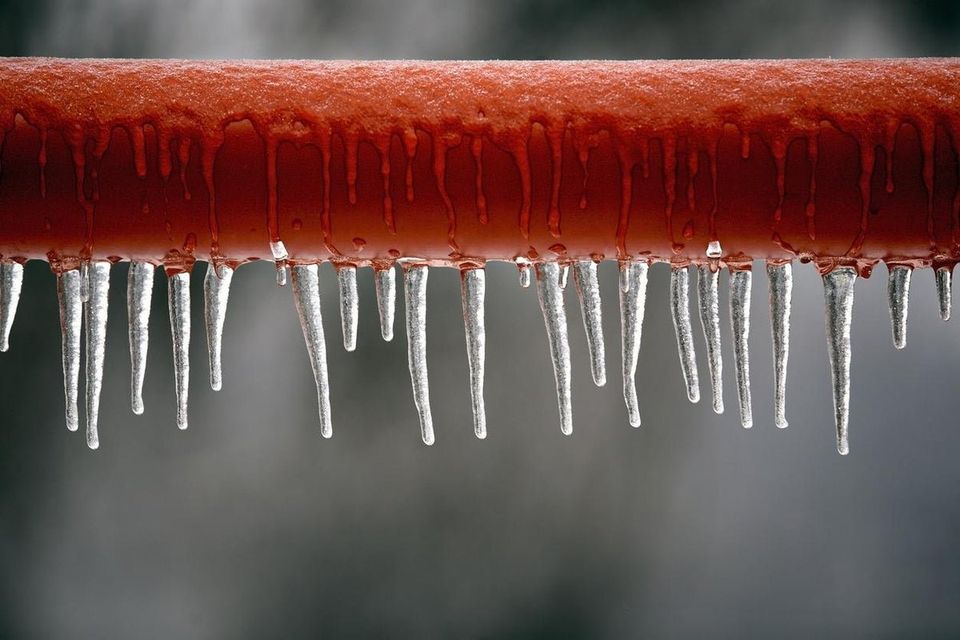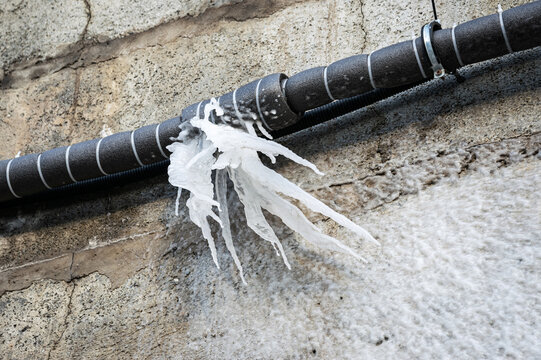Tips to Safeguard Your Pipes from Freezing: Expert Advice
Tips to Safeguard Your Pipes from Freezing: Expert Advice
Blog Article
We've come across this post about Helpful Tips to Prevent Frozen Pipes this Winter down the page on the web and accepted it made sense to share it with you over here.

Cold weather can ruin your plumbing, specifically by freezing pipes. Below's exactly how to stop it from happening and what to do if it does.
Intro
As temperature levels drop, the danger of icy pipes boosts, possibly bring about costly repair services and water damages. Understanding how to avoid frozen pipelines is critical for homeowners in cold environments.
Comprehending Frozen Pipes
What triggers pipelines to freeze?
Pipes ice up when exposed to temperatures listed below 32 ° F (0 ° C) for prolonged durations. As water inside the pipelines ices up, it broadens, putting pressure on the pipe walls and possibly causing them to break.
Dangers and damages
Frozen pipelines can result in water system disturbances, home damages, and pricey repair services. Burst pipelines can flood homes and create extensive architectural damage.
Signs of Frozen Water Lines
Identifying icy pipes early can avoid them from rupturing.
Just how to recognize frozen pipelines
Search for lowered water flow from taps, unusual smells or sounds from pipes, and noticeable frost on subjected pipelines.
Prevention Tips
Shielding vulnerable pipes
Cover pipelines in insulation sleeves or use warm tape to secure them from freezing temperature levels. Focus on pipelines in unheated or external locations of the home.
Home heating methods
Keep interior areas adequately heated up, particularly areas with pipes. Open up closet doors to allow cozy air to distribute around pipelines under sinks.
Shielding Outdoor Pipes
Yard hoses and outdoor faucets
Disconnect and drain pipes garden hose pipes before winter. Mount frost-proof spigots or cover outdoor faucets with shielded caps.
What to Do If Your Pipelines Freeze
Immediate actions to take
If you suspect frozen pipelines, keep taps open up to alleviate stress as the ice thaws. Make use of a hairdryer or towels soaked in warm water to thaw pipelines gradually.
Long-Term Solutions
Structural modifications
Think about rerouting pipes far from exterior walls or unheated areas. Include added insulation to attic rooms, cellars, and crawl spaces.
Upgrading insulation
Buy premium insulation for pipelines, attic rooms, and walls. Appropriate insulation assists preserve consistent temperature levels and lowers the threat of frozen pipelines.
Verdict
Avoiding frozen pipes needs aggressive measures and quick responses. By understanding the causes, indications, and preventive measures, property owners can secure their plumbing during winter.
5 Ways to Prevent Frozen Pipes
Drain Outdoor Faucets and Disconnect Hoses
First, close the shut-off valve that controls the flow of water in the pipe to your outdoor faucet. Then, head outside to disconnect and drain your hose and open the outdoor faucet to allow the water to completely drain out of the line. Turn off the faucet when done. Finally, head back to the shut-off valve and drain the remaining water inside the pipe into a bucket or container. Additionally, if you have a home irrigation system, you should consider hiring an expert to clear the system of water each year.
Insulate Pipes
One of the best and most cost-effective methods for preventing frozen water pipes is to wrap your pipes with insulation. This is especially important for areas in your home that aren’t exposed to heat, such as an attic. We suggest using foam sleeves, which can typically be found at your local hardware store.
Keep Heat Running at 65
Your pipes are located inside your walls, and the temperature there is much colder than the rest of the house. To prevent your pipes from freezing, The Insurance Information Institute suggests that you keep your home heated to at least 65 degrees, even when traveling. You may want to invest in smart devices that can keep an eye on the temperature in your home while you’re away.
Leave Water Dripping
Moving water — even a small trickle — can prevent ice from forming inside your pipes. When freezing temps are imminent, start a drip of water from all faucets that serve exposed pipes. Leaving a few faucets running will also help relieve pressure inside the pipes and help prevent a rupture if the water inside freezes.
Open Cupboard Doors
Warm your kitchen and bathroom pipes by opening cupboards and vanities. You should also leave your interior doors ajar to help warm air circulate evenly throughout your home.

Hopefully you enjoyed reading our piece about 6 Ways to Prevent Frozen Pipes. Thank you so much for finding the time to browse our content. Are you aware of somebody who is occupied with the niche? Do not hesitate to share it. Thank-you for going through it.
Click Here Report this page